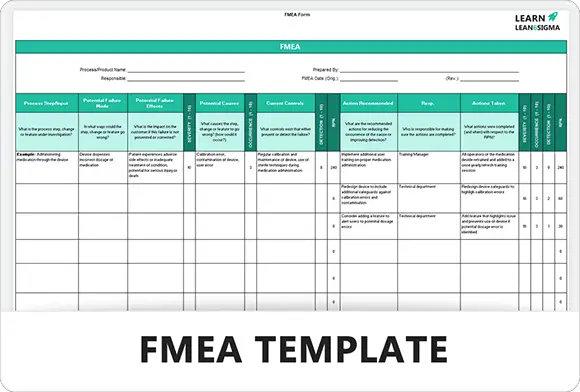How does a PFMEA differ from DFMEA?
The difference between a PFMEA and a Design Failure Mode and Effects Analysis (DFMEA) is primarily based on their areas of focus and application within the lifecycle of a product or service. Both are systematic methodologies used for identifying, analyzing, and mitigating risks, but they apply to different aspects of production and development.
Process Failure Mode and Effects Analysis (PFMEA)
PFMEA is focused on processes used in the manufacturing or execution of a service. It examines each step in a process to identify where and how failures might occur.
The primary goal is to ensure operational efficiency and process reliability. PFMEA aims to identify potential failures that can impact the quality of the output, including production delays, inefficiencies, and defects.
PFMEA is used in analyzing manufacturing processes, assembly lines, service delivery processes, and other operational procedures.
PFMEA looks at factors such as human error, equipment failure, material quality, environmental conditions, and process variability. It assesses the potential impact of these factors on the process and the final product or service.
The outcome of PFMEA is often process improvement, through changes in procedures, quality control enhancements, training, or equipment upgrades.
Design Failure Mode and Effects Analysis (DFMEA)
DFMEA is concerned with the design of a product. It systematically evaluates a product’s design to identify potential failures and their causes.
The main objective is to enhance product safety, reliability, and functionality. DFMEA seeks to uncover design weaknesses that could lead to failure in the product’s use or reduce its lifespan.
DFMEA is applied during the product design phase, often in industries like automotive, aerospace, electronics, and consumer goods manufacturing.
The analysis in DFMEA includes assessing the failure modes related to materials, components, subsystems, interfaces, and overall product design. Factors like material properties, design tolerances, mechanical stress, and environmental impacts are considered.
The outcomes include design modifications, material changes, and the establishment of design standards and specifications to mitigate identified risks.
Key Differences
PFMEA is process-oriented (focusing on how a product is made or a service is provided), whereas DFMEA is design-oriented (focusing on what is being made).
PFMEA deals with the risks associated with process variables, whereas DFMEA deals with risks inherent in the design of the product itself.
PFMEA is typically performed during process development and before the full-scale production or implementation of a service, while DFMEA is conducted during the product design phase, often before a prototype is even created.
PFMEA aims at ensuring efficient and reliable processes, reducing operational failures and defects. DFMEA targets the elimination or reduction of design-related failures, improving product safety, reliability, and functionality.














